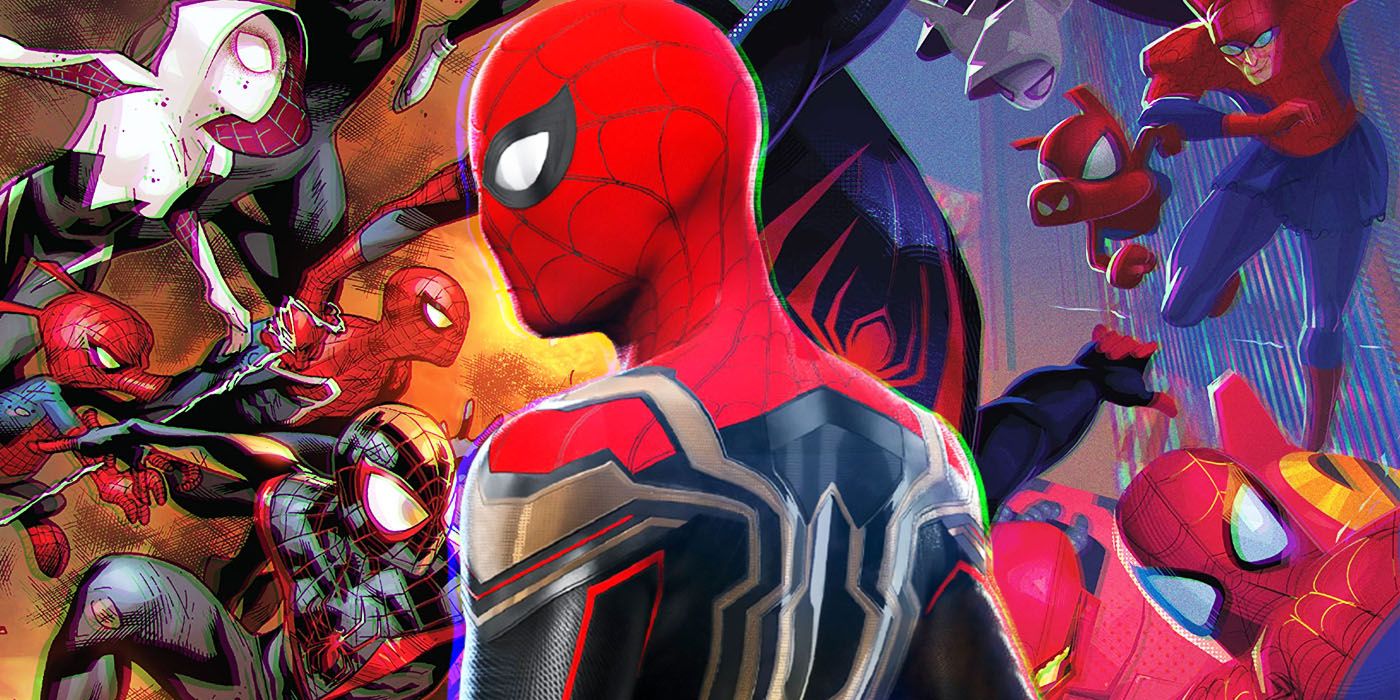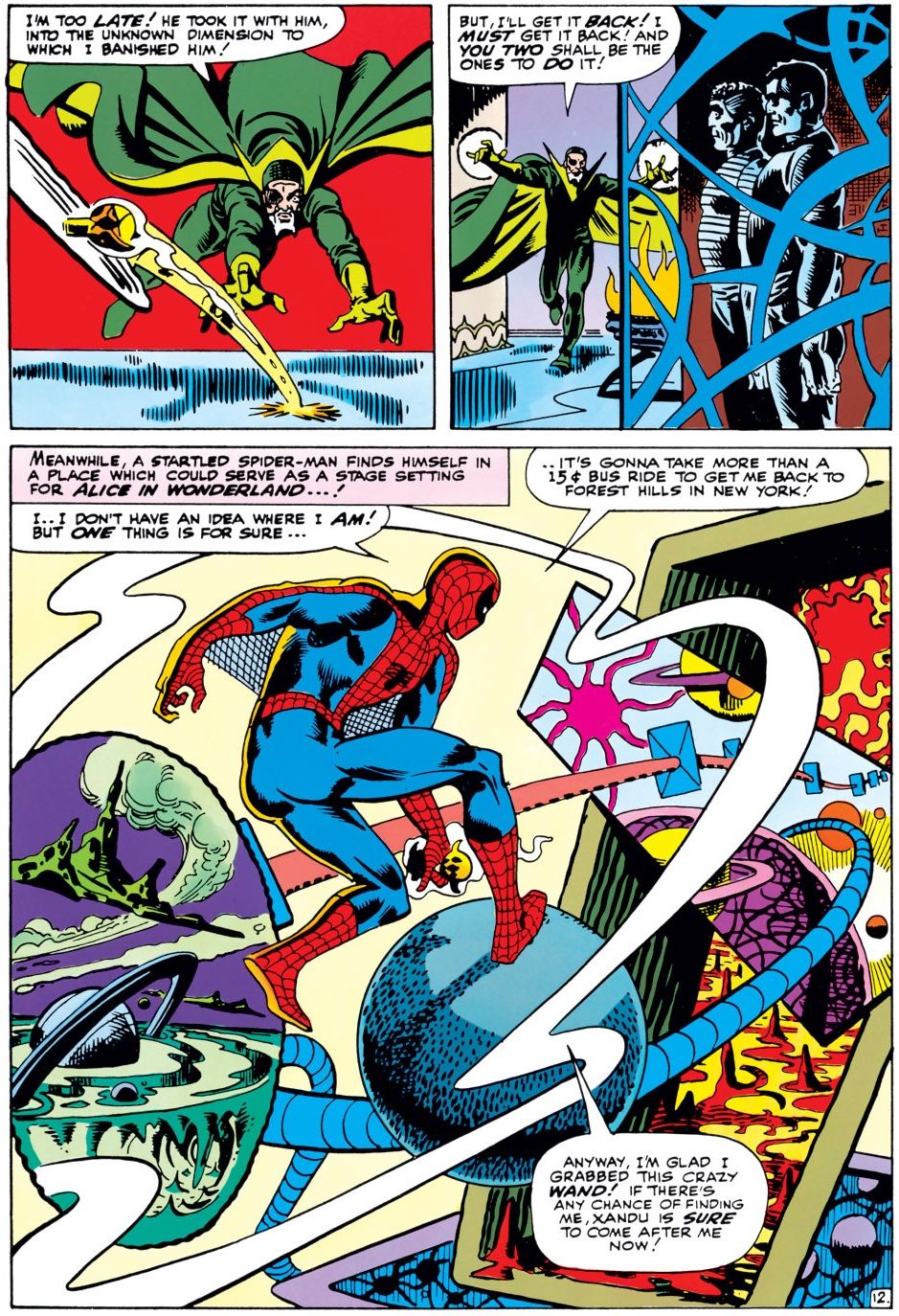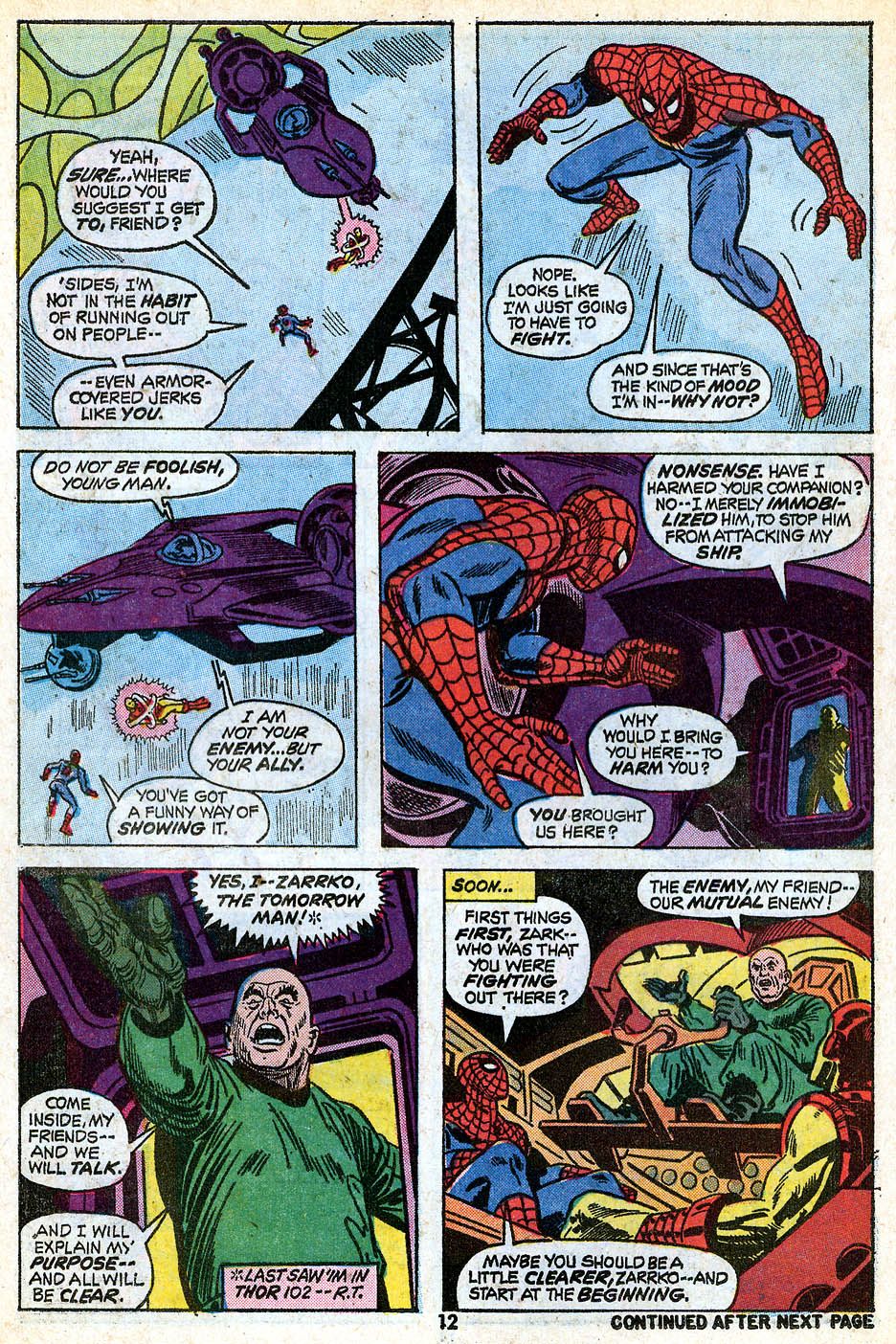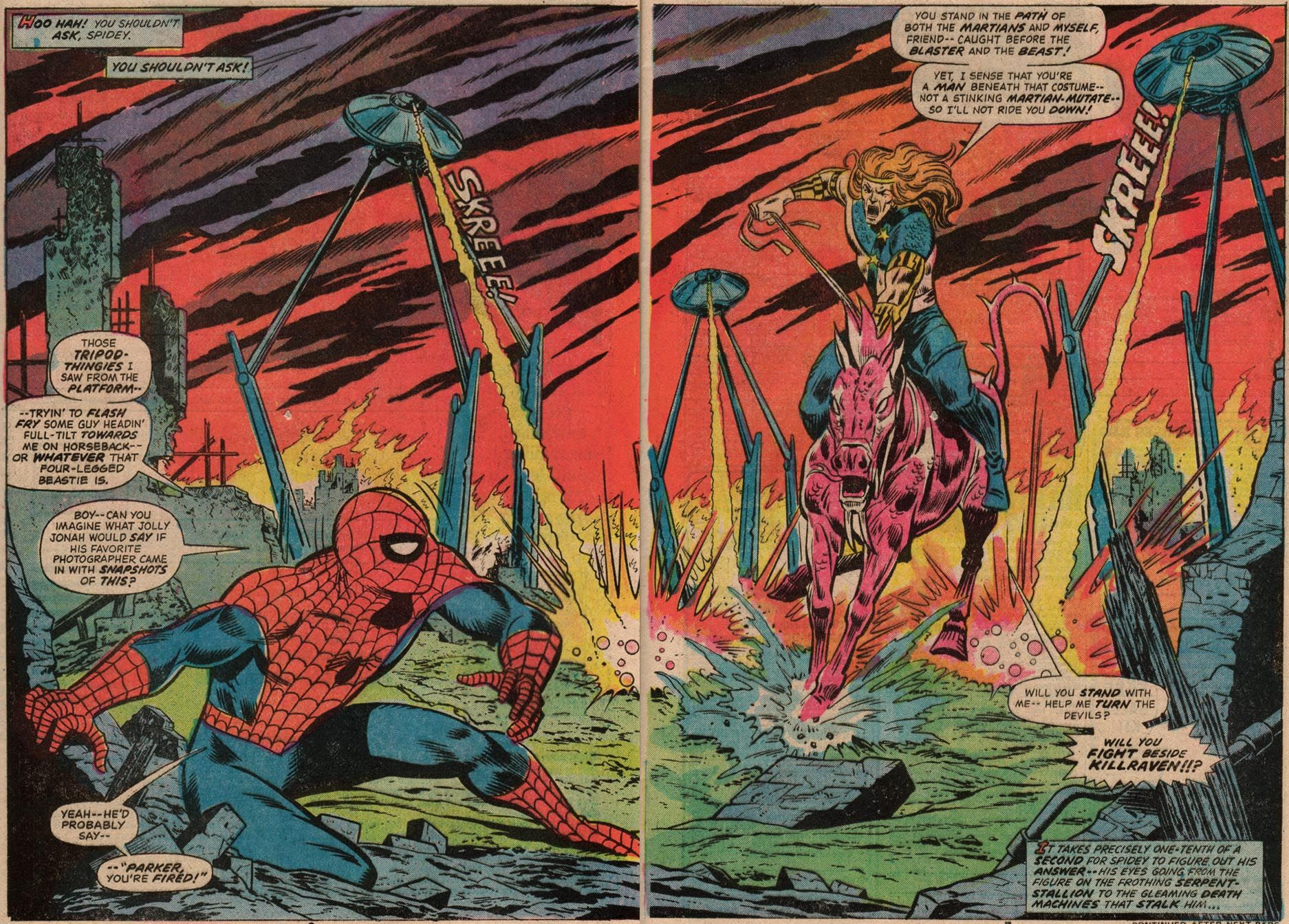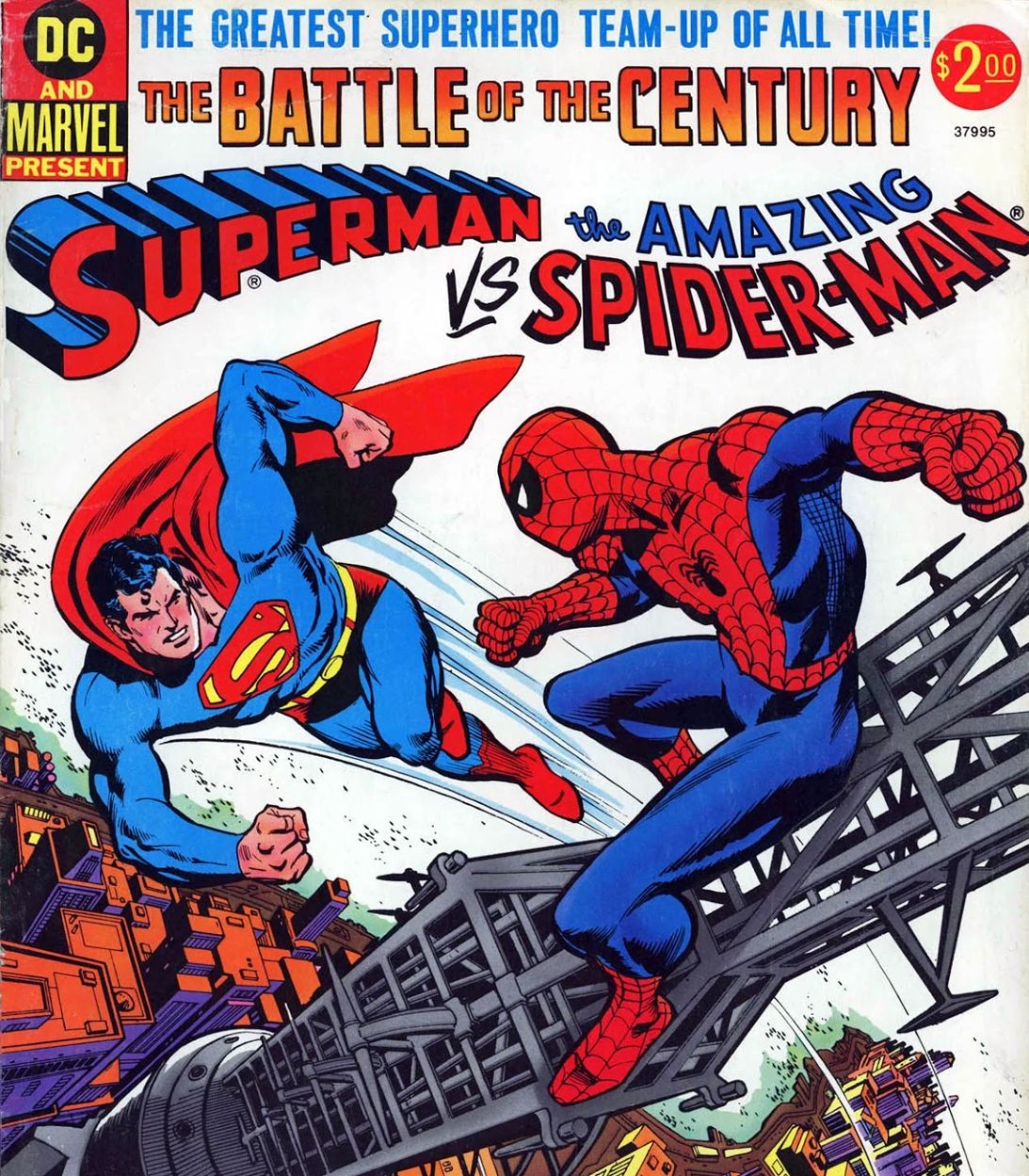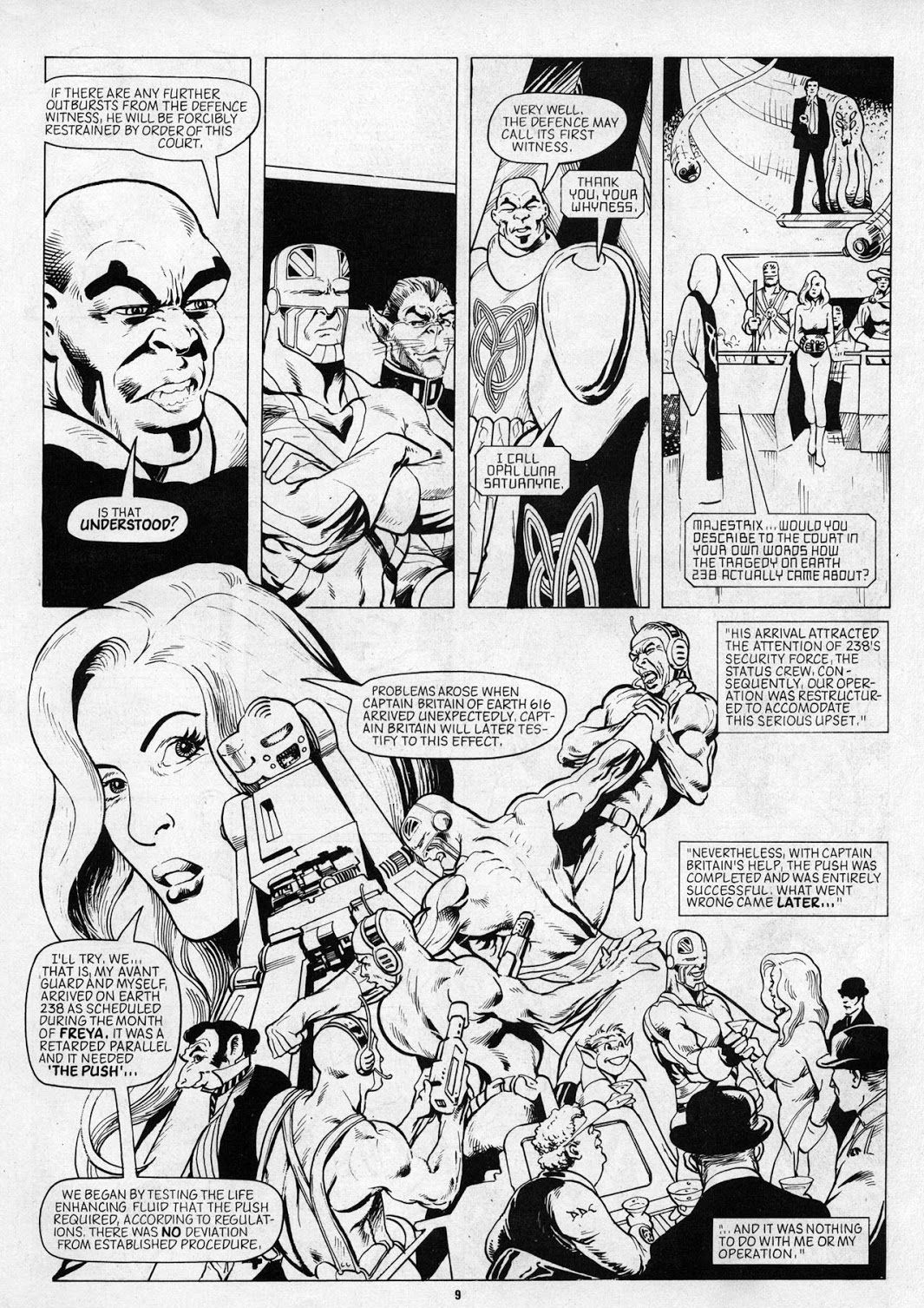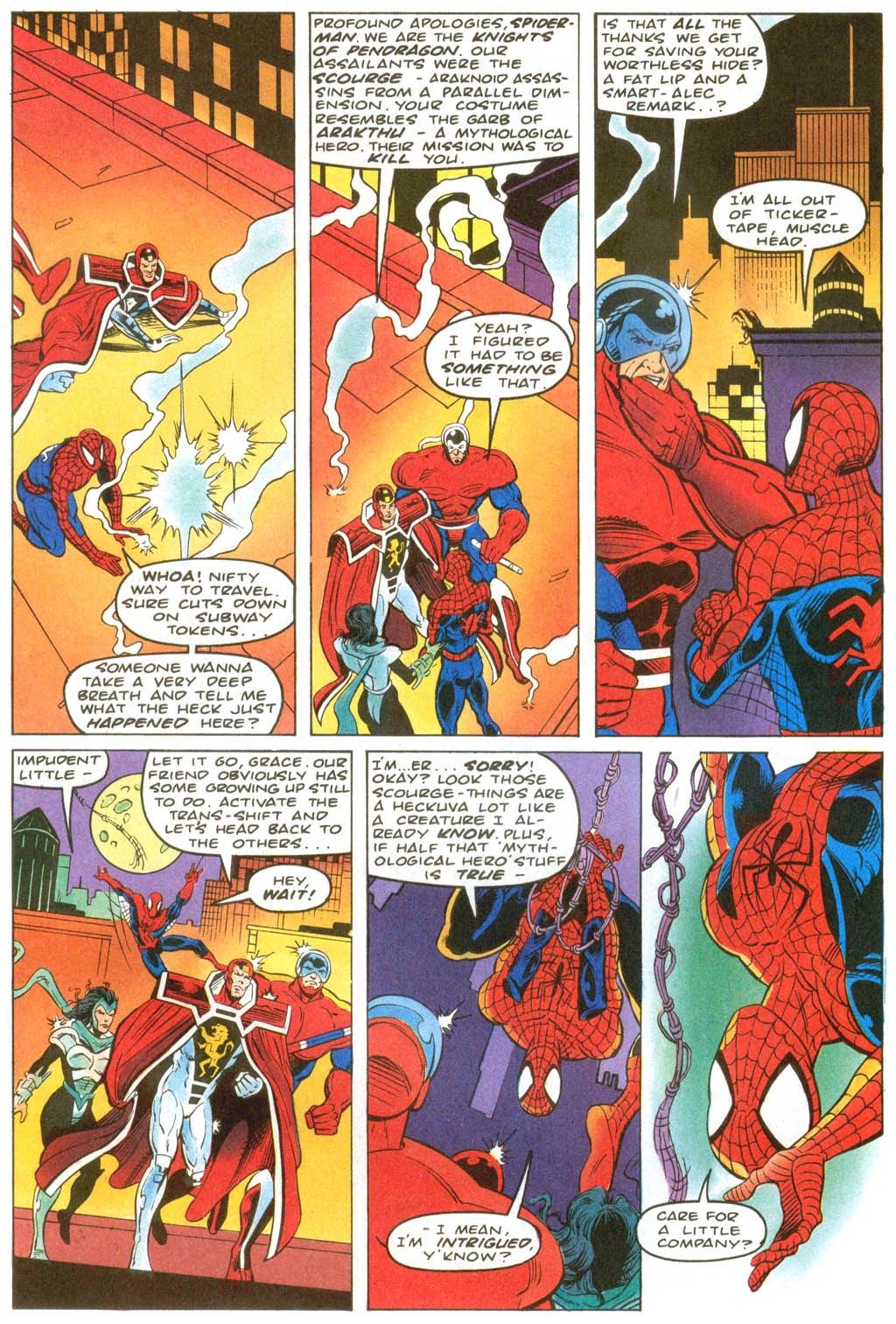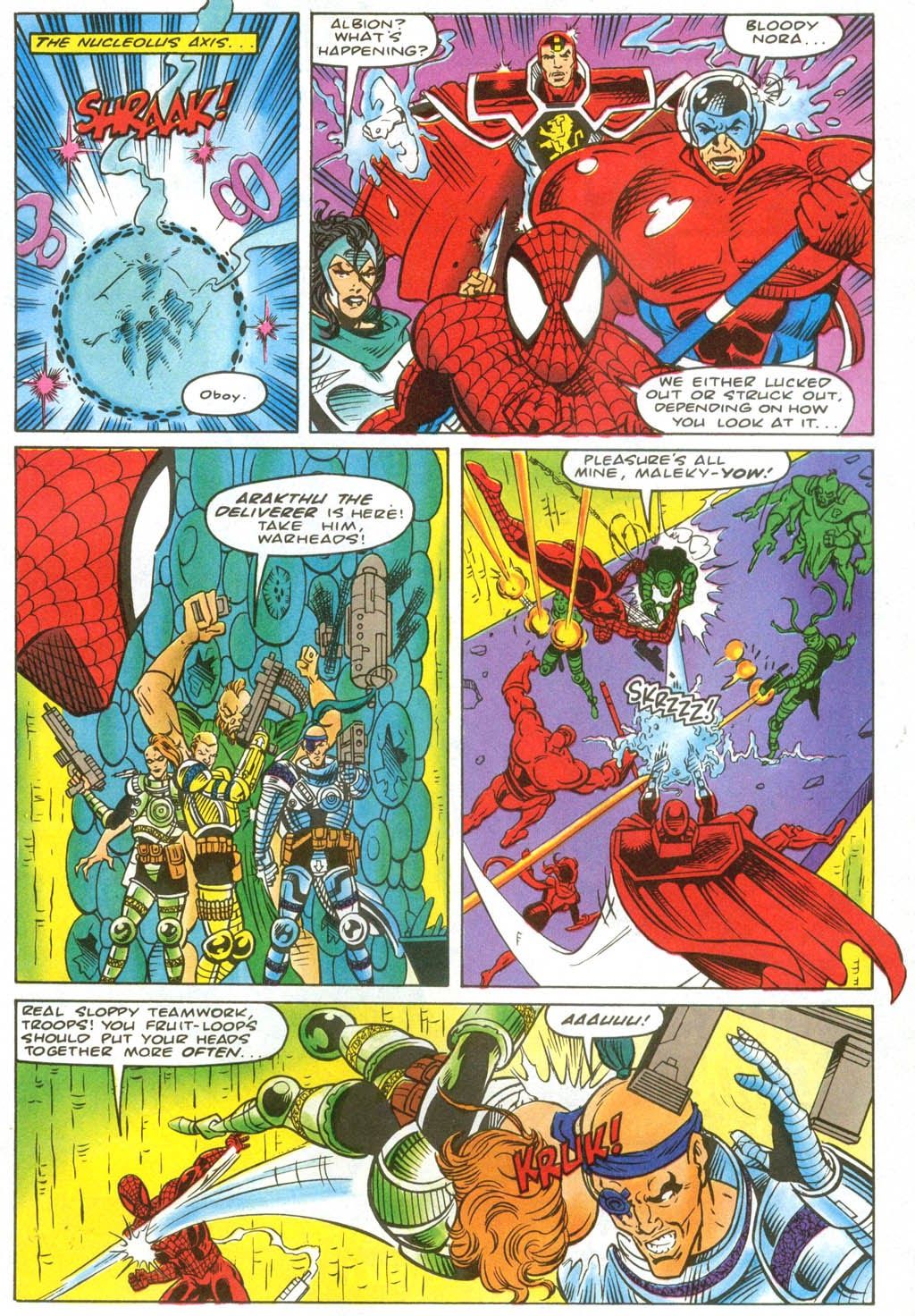Today, we try to pinpoint the first time that Spider-Man visited an alternate reality in the Multiverse.
In "When We First Met", we spotlight the various characters, phrases, objects or events that eventually became notable parts of comic lore, like the first time someone said, "Avengers Assemble!" or the first appearance of Batman's giant penny or the first appearance of Alfred Pennyworth or the first time Spider-Man's face was shown half-Spidey/half-Peter. Stuff like that.
A few different readers had asked me recently in the lead-up to Spider-Man: No Way Home when was the first time that Spider-Man visited an alternate reality. It is interesting that something that has become so connected with Spider-Man after Into the Spider-Verse was not really something that Spider-Man DID for many, many years. Heck, Spider-Man rarely went on adventures outside of New York City, let alone outside of this universe!
The interesting thing, of course, is the Multiverse has been a staple in Marvel Comics since the 1970s, with Roy Thomas once explaining to Rich Johnston at Bleeding Cool about how he coined the idea (and not from a Batman comic book that involved a "What If...? room," "[W]hile I can understand... believing that I got the idea for the WHAT IF series from a Gardner Fox story (which, I must admit, I do not recall–I was never a big followers of Batman as a young adult, even when the "New Look" came in circa 1964), I don't think my old friend and quasi-mentor Gardner had anything to do with it. Stan Lee, who probably didn't read that story, was given to using the expression "What if"– not that it was especially unique to him–and it was from Stan's usage that I concocted the notion of the series. I always found it was easier to sell Stan on the idea to a series if I used a name/phrase that I knew he liked–like THE INVADERS and WHAT IF. Half the battle was already won. Despite the phrase being overheard from Stan, both the concept and its name were my idea–there wasn't even a co-creating artist in this case, although Jim Craig drew WHAT IF #1."
What If...? comics, however, were self-contained, so while MANY of them starred Spider-Man, it wouldn't be until roughly forty years after the series debuted that the "real" Spider-Man started to interact with these other universes. So when DID it happen?
SPIDER-MAN VISITING THE DARK DIMENSION DOESN'T COUNT
In the second Amazing Spider-Man Annual (by Steve Ditko and Stan Lee), Spider-Man is sent into another dimension while teaming up with Doctor Strange, but that really doesn't count as the sort of alternate dimension that we're talking about here, right?
I don't believe the Dark Dimension even counts as being outside of the Marvel-616 Universe. It's just a sort of other dimensional aspect of this universe. It is a shame, though, since Spider-Man later returned to the Dark Dimension a LOT in future comic book stories. That was really his main inter-dimensional go-to spot for many years.
SPIDER-MAN'S TECHNICAL FIRST JOURNEY INTO AN ALTERNATE REALITY IN THE MULTIVERSE
In the Marvel Universe, every time you go to the future it is technically an alternate reality in the Multiverse, so when Spider-Man and Iron Man traveled to the 23rd Century and the time of Zarrko in Marvel Team-Up #9 (by Gerry Conway, Ross Andru and Frank Bolle), that could be technically considered an alternate timeline, but really, I don't think that's what we think about as "Alternate timelines," right?
A better possible argument is Marvel Team-Up #45 (by Bill Mantlo, Sal Buscema and Mike Esposito), where Spider-Man traveled to the alternate reality of Earth-691 to fight the Martians alongside Killraven...
You see, there were hints at the time (that were later confirmed) that Killraven's reality was the same as the Guardianss of the Galaxy and the same comic that heavily suggested that (later confirmed) fact (Defenders #26 by Steve Gerber, Sal Buscema and Vince Colletta) also revealed that the Guardians of the Galaxy's reality was an alternate timeline (since the Guardians met Vance Astro's younger self and Vance does not remember the meeting at all).
However, at the time, it was not yet confirmed that Killraven and the Guardians DEFINITELY shared a reality, so Spidey's trip, like the one with Iron Man to face Zarrko, would probably be better termed, at the time, as a trip to just "the future," so while these trips (especially the Killraven one) are technically the answer, I think we're really looking for something more explicit where Spider-Man gets that he is visiting an alternate reality.
Similarly, obviously Spider-Man's team-up with Superman was in another reality, but not one that Spider-Man actually TRAVELED to...
HOW THE CREATION OF MARVEL 616 LED TO SPIDER-MAN'S FIRST MULTIVERSE JOURNEY
David Thorpe explained to Marvel.com how he came up with the idea of having the "real" Marvel Universe labeled as Earth-616 and it came down to the Marvel UK writers wanting to NOT deal with the regular Marvel Universe for fear of getting Marvel irked at them:
Thorpe laid it all out as:
Because we wanted to do anything we liked, we set a goal that Captain Britain was going to come back in this alternate universe, which was nothing to do with what was then the mainstream Marvel Universe, so that anything that we did wouldn't upset the continuity of the main Marvel Universe. So it's kind of ironic that this universe became the mainstream Marvel Universe, because that was the exact opposite of the intention at the time. But it's cool.
Then I set up this overarching narrative because they appeared in a monthly comic. Bear in mind that we only had six pages or so a month [because we produced lots of different American comics like AVENGERS]. So those pages were very crammed with storyline ideas, artwork, and everything that Alan Davis did. You couldn't get very much done in one particular issue.
There was a very long, overarching narrative that I developed, and that involved this character called Saturnyne, who was responsible for all the different alternative universes, alternative Earths. And she was trying to ensure the happy transition of all these Earths to the next evolutionary level.
And I guess, at the back of my mind, this being-- kind of leading up to the millennium and the idea of the age of Aquarius, that the coming age was going to be somewhat better than the age that we had in those days.
So, this Earth, Earth-616, was the one that was holding everything back because it was basically the worst-performing of all the other Earths. Saturnyne was sent to kind of put the evolutionary fluid into the water supply that we were all drinking. It was when Captain Britain discovered this evolved rat in the sewers that he first got the idea that this was going on.
There was a lot of fun, there was a lot of humor, there was a lot of satire. And we had our tongues in our cheeks because that would seem like the only way you could write Captain Britain, because otherwise, a character leaping from one tall building to another draped in a Union Jack could be misinterpreted.
While Thorpe coined the universe name, he was off the book (Daredevils) before it could be used, and a young Alan Moore was actually the first person to use Thorpe's term for the "real" Marvel universe, Earth-616...
Marvel UK then kept using the Multiverse repeatedly over the years and in the 1992 Marvel UK book, Knights of the Pendragon #8 (by Dan Abnett and John Tomlinson and artist John Royle and a bunch of inkers), Spider-Man agrees to come with the Knights to an alternate reality where spider-like beings have taken over the Earth...
Then then show up in that other Multiverse world later in the issue...
Amusingly, that adventure later led to Spider-Man destroying ANOTHER planet in the Multiverse, as I wrote about a few years back.
That 1992 issue, as far as I can tell, was the first time that Spider-Man actively traveled to an alternate reality in the Multiverse with the INTENT of it being a visit to an alternate reality (and not a visit to the future), which just sounds wrong, right? Since it took so long, I am doubting myself, so if you can think of an earlier example, please let me know!
Thanks to everyone who suggested this one and thanks to Tom A. and Rob H. for interesting new angles on the time travel issues. If anyone else has a suggestion for a notable comic book first, drop me a line at brianc@cbr.com!

